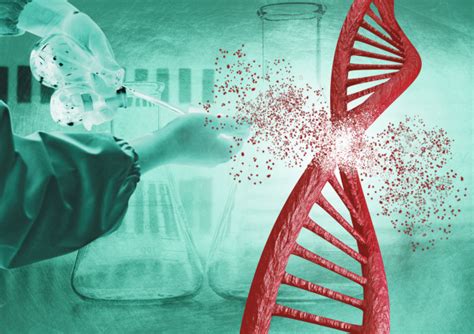The biotechnology industry has witnessed significant advancements in recent years, transforming the way we approach healthcare, agriculture, and environmental sustainability. Amidst this rapid progress, a novel technology has emerged, poised to revolutionize the field: Tetralinx. This innovative breakthrough has the potential to transform the biotech landscape, enabling unprecedented precision, efficiency, and scalability in various applications. In this article, we will delve into the world of Tetralinx, exploring its underlying mechanisms, benefits, and potential applications.
Tetralinx represents a paradigm shift in biotechnology, leveraging the power of artificial intelligence, machine learning, and data analytics to optimize biological systems. By integrating these technologies, researchers and scientists can now design, engineer, and optimize biological pathways with unprecedented precision, enabling the creation of novel biological products, therapies, and solutions. This convergent approach has far-reaching implications, enabling the development of more effective, sustainable, and cost-efficient biotechnological solutions.
Unraveling the Science Behind Tetralinx
To comprehend the significance of Tetralinx, it is essential to understand the underlying science. At its core, Tetralinx involves the integration of three primary components:
Artificial Intelligence (AI)
AI plays a pivotal role in Tetralinx, enabling the analysis and interpretation of vast amounts of biological data. Machine learning algorithms are employed to identify patterns, predict outcomes, and optimize biological pathways. This AI-driven approach allows researchers to simulate, model, and predict the behavior of complex biological systems, streamlining the design and development process.
Machine Learning (ML)
Machine learning is a critical component of Tetralinx, facilitating the identification of relationships between biological variables and the prediction of system behavior. By analyzing vast datasets, ML algorithms can recognize patterns, detect anomalies, and optimize biological pathways, enabling the creation of more efficient and effective biotechnological solutions.
Data Analytics
Data analytics is the third pillar of Tetralinx, providing the framework for data integration, visualization, and interpretation. Advanced data analytics tools enable researchers to integrate and analyze vast amounts of biological data, identifying trends, patterns, and correlations that inform the design and optimization of biological systems.

Unlocking the Potential of Tetralinx
The integration of AI, ML, and data analytics in Tetralinx has far-reaching implications for the biotechnology industry. By harnessing the power of these technologies, researchers and scientists can:
Design and Optimize Biological Pathways
Tetralinx enables the design and optimization of biological pathways with unprecedented precision, allowing researchers to create novel biological products, therapies, and solutions. This AI-driven approach streamlines the development process, reducing costs, timelines, and environmental impact.
Develop Novel Therapies and Treatments
Tetralinx has the potential to revolutionize the field of medicine, enabling the development of novel therapies and treatments for complex diseases. By analyzing vast amounts of biological data, researchers can identify new targets, develop personalized medicine approaches, and create more effective treatments.
Enhance Agricultural Sustainability
Tetralinx can also be applied to agriculture, enabling the development of more sustainable and efficient farming practices. By optimizing biological pathways, researchers can create crops that are more resilient, disease-resistant, and productive, reducing the environmental impact of agriculture.
Transform Environmental Sustainability
The potential applications of Tetralinx extend beyond healthcare and agriculture, with significant implications for environmental sustainability. By optimizing biological systems, researchers can develop novel solutions for pollution remediation, climate change mitigation, and conservation.






Conclusion: Embracing the Future of Biotechnology
Tetralinx represents a groundbreaking innovation in biotechnology, poised to transform the industry. By harnessing the power of AI, ML, and data analytics, researchers and scientists can unlock the full potential of biological systems, creating novel solutions for complex challenges. As we move forward, it is essential to continue exploring the possibilities of Tetralinx, fostering a culture of innovation, collaboration, and sustainability.
We invite you to share your thoughts on the potential applications and implications of Tetralinx. How do you envision this technology transforming the biotechnology industry? Share your insights in the comments below.
What is Tetralinx?
+Tetralinx is a novel technology that integrates artificial intelligence, machine learning, and data analytics to optimize biological systems.
What are the potential applications of Tetralinx?
+Tetralinx has far-reaching implications for healthcare, agriculture, and environmental sustainability, enabling the development of novel therapies, sustainable farming practices, and innovative solutions for pollution remediation and climate change mitigation.
How does Tetralinx work?
+Tetralinx involves the integration of AI, ML, and data analytics to analyze and interpret vast amounts of biological data, enabling the design and optimization of biological pathways with unprecedented precision.
